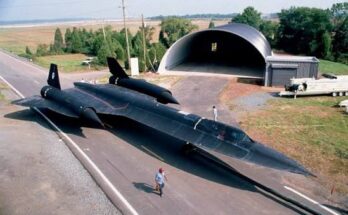
Delta Plane Crashes and Overturns in Toronto, Prompting Emergency Response
Delta Plane Crashes and Overturns in Toronto, Prompting Emergency Response
A Delta Air Lines flight suffered a catastrophic accident in Toronto, overturning after a crash landing that sent shockwaves through the aviation industry. The incident, which occurred at Toronto Pearson International Airport, resulted in emergency response teams rushing to the scene to assess the damage and ensure the safety of all onboard. While initial reports indicate that some passengers sustained injuries, the full extent of the situation remains under investigation.
This unexpected aviation disaster has raised questions about flight safety, airport conditions, and the factors that may have contributed to the crash. As investigators work to determine the cause, the world watches closely, hoping for answers and improvements in airline safety measures.
The Crash: What Happened?
According to preliminary reports, the Delta aircraft was attempting to land at Toronto Pearson International Airport when things took a turn for the worse. Witnesses describe the plane making an unsteady descent before touching down roughly on the runway. Shortly after impact, the aircraft lost control, veered off the runway, and ultimately overturned.
Emergency services were dispatched immediately, and fire crews arrived to ensure there were no fires or fuel leaks that could pose additional hazards. Passengers and crew members were evacuated as quickly as possible, with medical teams on standby to assess injuries and provide necessary care.
While the exact number of injured passengers has not been confirmed, sources indicate that multiple individuals were taken to local hospitals for evaluation. The severity of their injuries remains unclear. Fortunately, there have been no confirmed fatalities at this time.
Potential Causes of the Crash
Aviation experts and authorities are now analyzing several possible causes that may have led to the Delta plane crash in Toronto. Some of the key factors under consideration include:
1. Weather Conditions: Toronto is known for unpredictable weather, especially during colder months when snow and ice can create hazardous landing conditions. Investigators will assess whether poor visibility, strong winds, or icy runways played a role in the crash.
2. Mechanical Failure: Aircraft undergo rigorous maintenance checks, but mechanical failures can still occur unexpectedly. Investigators will review the aircraft’s maintenance history and black box recordings to determine if any equipment malfunctions contributed to the incident.
3. Pilot Error: Human error remains a leading cause of aviation accidents. Investigators will examine whether the pilots made any miscalculations in their landing approach or failed to react appropriately to changing conditions.
4. Runway Conditions: If the runway was improperly maintained or had foreign objects present, it could have contributed to the aircraft’s loss of control. Airport officials will be required to provide a full report on runway conditions at the time of the accident.
5. Air Traffic Control Communication: Clear communication between pilots and air traffic control is essential for safe landings. Authorities will review transcripts of communications to determine whether any miscommunication or misdirection played a role in the accident.
Passenger Reactions and Eyewitness Accounts
Passengers on board the Delta flight have described terrifying moments leading up to the crash. Many recall feeling the plane struggling to stabilize before a violent jolt upon landing. The impact sent luggage flying, and panic ensued as passengers scrambled to brace for the worst.
One passenger recounted, “As soon as we touched the ground, it felt like the plane was skidding uncontrollably. Then, before I knew it, we were tilting, and everything went sideways. People were screaming. It was the scariest moment of my life.”
Airport staff and eyewitnesses watching from the terminal also shared their shock at seeing the aircraft overturn. One ground crew member described the crash as “something out of a movie,” emphasizing how quickly emergency responders acted to prevent further disaster.
Emergency Response and Airport Disruptions
Toronto Pearson International Airport immediately activated its emergency response plan following the crash. Firefighters, paramedics, and police officers arrived at the scene within minutes, ensuring passengers were safely evacuated and that the aircraft posed no further risk.
Flights at the airport were temporarily delayed or rerouted as officials worked to clear the wreckage and assess the runway for damage. Travelers faced significant disruptions, with many departures and arrivals being rescheduled.
The Transportation Safety Board of Canada (TSB) has launched an investigation to determine the cause of the crash. Representatives from Delta Air Lines, the Federal Aviation Administration (FAA), and other aviation regulatory bodies are also participating in the inquiry.
Delta Air Lines’ Response and Safety Record

Delta Air Lines has issued a statement acknowledging the crash and expressing relief that no fatalities were reported. The airline pledged full cooperation with investigators and reassured the public of its commitment to passenger safety.
Delta has a strong safety record, consistently ranking among the top U.S. airlines in terms of operational reliability. However, this incident will likely lead to increased scrutiny of the airline’s safety procedures and aircraft maintenance practices.
The Bigger Picture: Aviation Safety and Future Precautions
Air travel remains one of the safest modes of transportation, but accidents like this highlight the ever-present risks involved. Each aviation incident provides valuable lessons that help improve safety protocols, pilot training, and aircraft technology.
To prevent similar accidents in the future, aviation authorities and airlines may consider implementing additional measures such as:
1. Enhanced Pilot Training: More frequent simulator training sessions for pilots to prepare for extreme landing conditions.
2. Improved Weather Monitoring: More advanced weather prediction tools to help pilots make informed decisions about landings.
3. Stricter Runway Safety Checks: Routine inspections to ensure runways are clear of debris and properly maintained.
4. Aircraft System Upgrades: Regular advancements in aircraft technology to enhance stability during turbulent landings.

Conclusion: A Reminder of Aviation Risks
The Delta plane crash in Toronto serves as a stark reminder of the challenges and risks associated with air travel. While the aviation industry has made significant strides in safety, no system is entirely foolproof. The quick response of emergency teams and the resilience of the passengers and crew helped prevent an even greater tragedy.
As investigators work to uncover the cause of the crash, Delta Air Lines and aviation authorities will likely take significant steps to reinforce safety measures. For now, the focus remains on supporting the injured, restoring normal airport operations, and ensuring that such incidents are prevented in the future.
The world will be watching closely as more details emerge from the investigation. For travelers, the crash serves as both a cautionary tale and a testament to the importance of rigorous safety protocols in modern aviation.


